Coral bleaching observations are critical to predict, understand, and deploy responses, for local, regional or global bleaching events. Fortunately, there are multiple organisations and initiatives working on the front-line to serve all coral reef ecosystem managers; domestic and foreign Governments; non-governmental and intergovernmental organisations; in-water coral reef monitoring networks; the private sector; numerous scientific researchers at universities and research organisations; educators; students; and the public.
Coral bleaching observations can range from in-water monitoring to arial surveys and ecosystem climate modelling to provide a suite of data. Below is a range of resources and initiatives to support coral bleaching observations. Should you know of any additional observation resources that are relevant, please send them to Thomas Dallison at the ICRI Secretariat.
The available observation tools have been grouped by region enabling a quick identification fo the most suitable tools for your use. Please use the ‘quick jump’ links above to access each section.
Global Tools
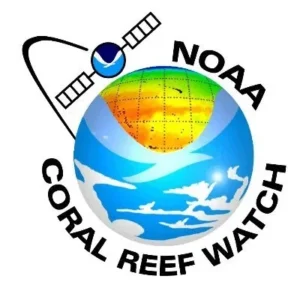
NOAA’s Coral Reef Watch
To address a defined need of coral reef managers around the world, NOAA established the Coral Reef Watch (CRW) program in 2000. For more than 20 years, NOAA CRW has utilized remote sensing, modeled and in-situ data to predict, observe, and alert users globally to threats to the coral reef environment. The near real-time satellite products and modeled Outlooks that comprise CRW’s global early-warning system of coral reef environmental changes have successfully and accurately predicted and monitored all major mass coral bleaching events observed globally since 1997, and have provided other critical information to users, especially during periods of severe ocean heat stress.
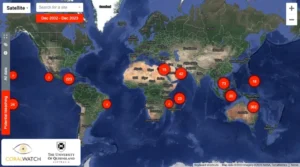
CoralWatch Interactive Data Map
The new CoralWatch interactive data map provides a comprehensive view of coral health worldwide. Considering the potential higher than average ocean temperatures that 2023/24 may present due to being an El Niño year, there is an increased risk of coral bleaching this year, which have already occurred in the Caribbean. In response, CoralWatch has launched this map to provide better feedback on locations and timing of bleaching events. This tool is critical for conservation, education and management purposes. The CoralWatch also calls for bleaching data which can be submitted through the link below.

PADI Aware Foundation Adopt the Blue Network
PADI’s global network of 6,600 dive centers and resorts and more than 128,000 professional members worldwide will provide the backbone for Adopt The Blue. They will provide unprecedented scale and unmatched potential for participants to take direct action that will drive measurable conservation impact. As part of this initiative, a Global Action Map is available that can be filtered to showcase global bleaching reports.
The Caribbean, Americas & Atlantic Region
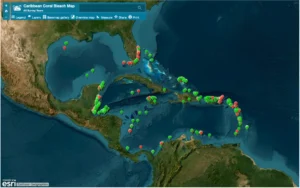
AGGRA: Atlantic and Gulf Rapid Reef Assessment (AGRRA) – Caribbean
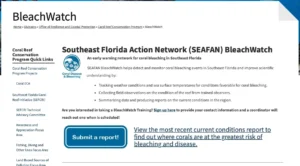
Southeast Florida Action Network (SEAFAN) BleachWatch
An early warning network for coral bleaching in Southeast Florida. SEAFAN BleachWatch helps detect and monitor coral bleaching events in Southeast Florida and improve scientific understanding by: Tracking weather conditions and sea surface temperatures for conditions favourable for coral bleaching, collecting field observations on the condition of the reef from trained observers, and summarising data and producing reports on the current conditions in the region.
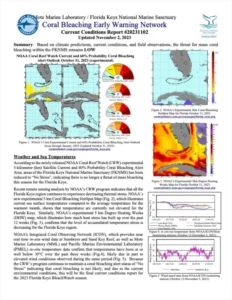
Mote Marine Laboratory/Florida Keys National Marine Sanctuary Coral Bleaching Early Warning Network – Florida Keys BleachWatch Program: Current Conditions Reports
Due to Florida reefs and portions of the Caribbean reefs experiencing an outbreak of stony coral tissue loss disease (potentially caused by bacteria), BleachWatch observers are also encouraged to also collect data on disease and no disease at their sites. These observations will help researchers try to understand the range, progression, and species affected. Please visit The Florida Keys National Marine Sanctuary for more information.
Information from NOAA’s Coral Reef Watch (CRW) remote sensing and Integrated Coral Observing Network (ICON) in-situ environmental monitoring analysis are combined with “BleachWatch” volunteer observations in the field to provide a comprehensive overview of “current conditions” throughout the FKNMS. These reports will be generated according to the current conditions and the potential risk for coral bleaching.
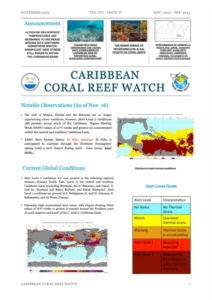
Caribbean Regional Climate Center: Caribbean Coral Reef Watch Climate Bulletins
The Caribbean Regional Climate Centre released regular climate bulletins for coral bleaching in the region using NOAA’s Coral Reef Watch data.
Indian Ocean Region
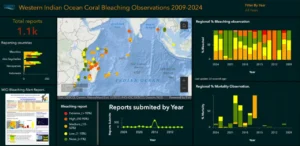
Western Indian Ocean Coral Bleaching Observations 2009-2024
CORDIO East Africa has developed a Western Indian Ocean Bleaching Observation Dashboard to record and report bleaching events throughout the region. The data presented include number of reports by country, regional percentage of bleaching by year, mortality observations, and the latest WIO Bleaching Alert Report. In CORDIO’s efforts to better understand the impacts of coral bleaching events in the region, they are seeking consistent, basic-level coral bleaching data from partners across the region. To contribute to this initiative, data can be submitted via an online form with guidance on how to collect and submit the data.
Further information is provided in the form and it is important to also submit data where no bleaching is occurring. The submitted data are then used to develop the ‘WIO Bleaching Alert Reports’.
The Pacific & Australia
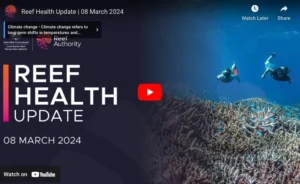
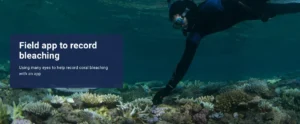
Australia
The Coral Bleaching App for Western Australia’s Reefs
